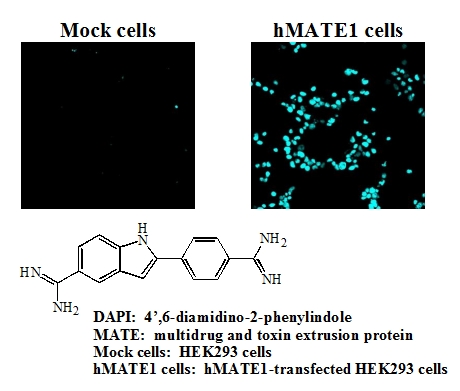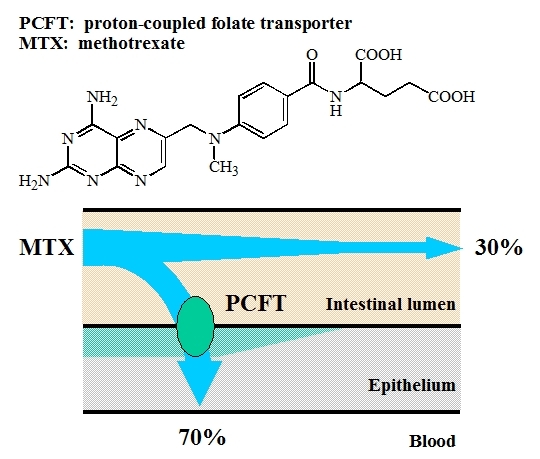
|
Fig. 2. Assay method for the evaluation of the functionality of MATE.
DAPI,
a fluorescent dye used for nuclear staining, can be transported by MATE,
which is involved in the renal secretion (excretion) of cationic
compounds, including drugs, but this compound is practically impermeable
through the plasma membrane of most live cells. Taking advantage of
such transport characteristics and fluorescent nature, which makes it
easier to detect, DAPI can be utilized for rapid assays of the
functionality of MATE. Incubation of regular cultured cells (mock), which do not have MATE, in DAPI solution does not result in any
fluorescent emission, but incubation of those transfected with hMATE1, a
human MATE subtype, results in the emission of blue fluorescence from DAPI, which is
transported into the cells and bound to nuclear DNA.
|

